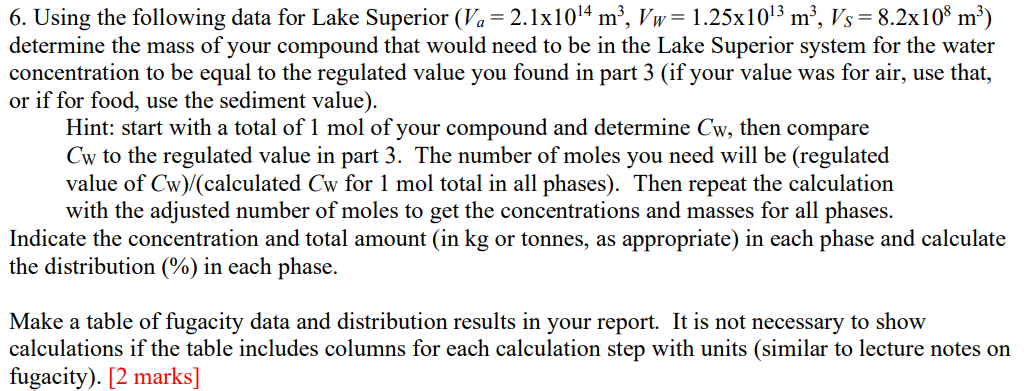Answered step by step
Verified Expert Solution
Question
1 Approved Answer
For n-octane: 6. Using the following data for Lake Superior (Va=2.11014m3,VW=1.251013m3,VS=8.2108m3) determine the mass of your compound that would need to be in the Lake
For n-octane:

Step by Step Solution
There are 3 Steps involved in it
Step: 1

Get Instant Access to Expert-Tailored Solutions
See step-by-step solutions with expert insights and AI powered tools for academic success
Step: 2

Step: 3

Ace Your Homework with AI
Get the answers you need in no time with our AI-driven, step-by-step assistance
Get Started


